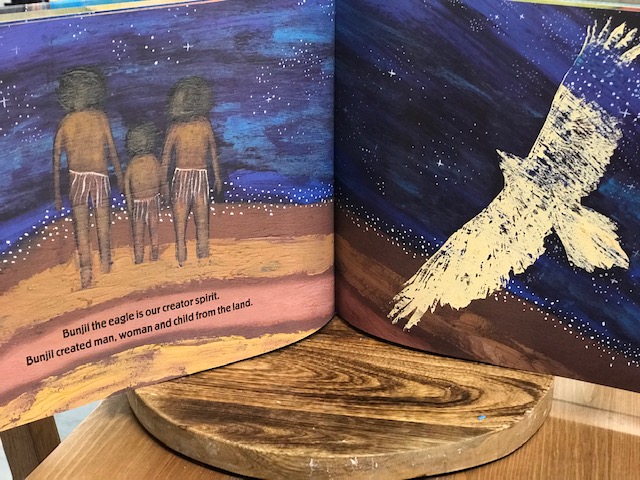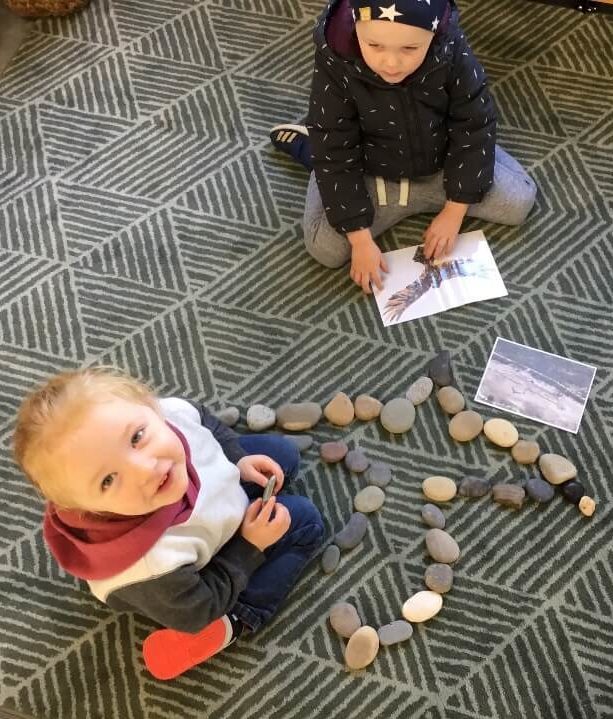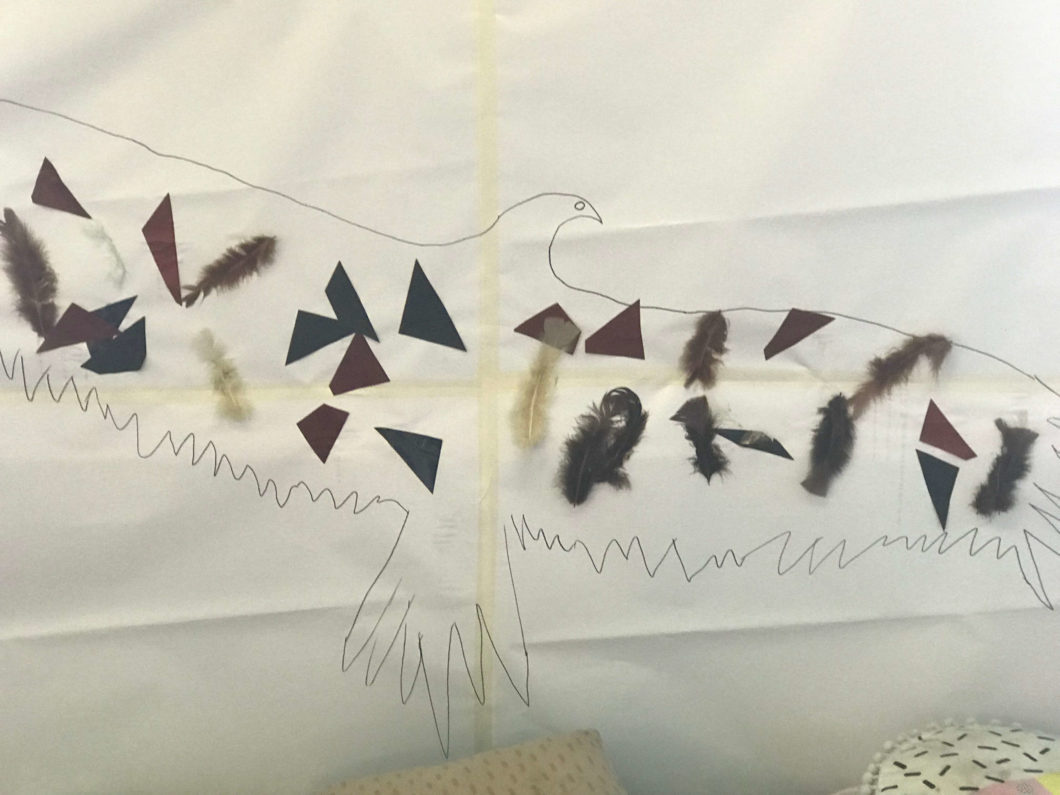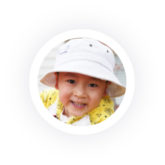Who is Bunjil?
“Who is Bunjil?” was a year-long project which formed part of our curriculum and commitment to honouring the traditional custodians of our land.
Throughout this year at Choklits child care centre in Ringwood, Melbourne we have been focusing on our connection to our country and deepening our understanding of the traditional owners of our land. Each of the classrooms started each day acknowledging the traditional custodians of our land past and present. Each class does this differently depending on the age of the children, some will complete the traditional acknowledgement where others will sing a song and say thank you to the land, the air, the water and people.
“Welcome to Country”
In our 3-year-old kindergarten room, the children started their learning journey and acknowledgement to country with a book called “Welcome to Country” by Aunty Joy Murphy and Lisa Kennedy. In this book, there is an eagle called Bunjil who is the creative spirit of the Wurundjeri people. We looked at how Bunjil created the people, animals and plants sparking the children’s interests in the creation of our Bunjil project.
Our pre-kindergarten teacher invited the children to explore ways to create their interpretation of the eagle. The children started expressing their ideas and understanding of Bunjil through paint and sponges and using their voices to further explain their thoughts as they made marks on the paper.
The children made the following remarks as they painted, “Look at Bunjil, look at my Bunjil, I made Bunjil, this is Bunjil, I made purple, I mixed red and blue, I made Bunjil, it’s purple”. As you can see from the pictures, the first interpretations are wonderful.
The Bunjil project continued to grow throughout the year as the children’s knowledge, confidence and connection to our country grew. The expressions of Bunjil has moved through many different creative mediums from painting, drawing, stones and clay to 3D experiences.
You can follow the expressions below. We looked at how we could make other representations of Bunjil, used the image of Bunjil at the You Yangs and created our very own stone Bunjil.

The pre-kindergarten class moved to drawing interpretations of Bunjil and using pictures as inspiration for their own interpretations. The children collaborated at group time to discuss their understandings of the eagle, its meaning and did a group project together.
Communicating with Clay
The class them moved to a clay experience deepening their understanding of the first Australian’s and the story of Bunjil. At group time, using their own creations, the children began to retell the story of Bunjil, demonstrating their confidence in communication and understanding of the subject matter. They were really captivated by the story. Through the clay experience the educators noticed that the children needed support with creating the shape of Bunjil, so we investigated the shape of Bunjil where she broke it down into some simple shapes, square, circle and triangle. This assisted the children with creating the 3D shape and interpretation of Bunjil.NAIDOC Week
Through NAIDOC Week we furthered our knowledge of Bunjil and Aboriginal culture by looking at the aboriginal flags and symbols in a game and also further adding to our clay Bunjil experience. We had discussions at group time and referred back to our book “Welcome to Country” to see how far our knowledge and understanding had come. We discussed the meaning of the colours of the Aboriginal flag and furthered our understanding of what each colour represented “red is for land”, “black is for the people” and “yellow for the sun”.
The Bunjil project started in or 3-year-old kindergarten room but soon became an interest for many of the children and educators across the centre. The pre-toddler room has also been captivated by the story of Bunjil.
They also started with the Aboriginal Story – “Welcome to Country”.
Fine Motor Skills
After the story, the pre-toddler (15months to 2 years) class talked about Bunjil the eagle, how he flys high in the sky, he has big wings and feathers. So from here, we decided to make our own eagles from modelling clay and feathers. Using their fine motor skills the children manipulated the clay with their fingers, pushing and moulding it whilst enjoying the sensory experience. They then went about pushing the feathers into the clay creating their own Bunjil.
Creativity, imagination and concentration are all important elements of this rich learning activity for these young early learners. This learning is to help our children understand and learn about the history, culture and lives of Indigenous Australians. The class furthered their experiences like the pre-kindergarten room creating our own Bunjil from stones and drawing an eagle shape on a piece of paper. This was a teacher lead initiative giving the children instructions to put the stones on the lines so we could create our own Bunjil. It was an interesting exercise and an opportunity for the children to listen to instruction and then express their thoughts and ideas of Bunjil for themselves.
The children in the pre-toddler room also finished their project by making a very large Bunjil and placing feathers on it, this was then hung in the room as a representation of their group learning.
It has been wonderful to watch the Bunjil project grow and develop at Choklits over the year. To see how it has captivated the interests of the children and educators hearts and minds has been very inspiring to observe. These experiences were lead equally by the children and the educators and the input they had in working together across the classrooms and as a team captures what Choklits learning philosophy is about. We will continue to grow and develop our knowledge of the first Australians and will continue to pay our respects each day through acknowledgement of the land and to the traditional owners of the land past and present, at Choklits they are the Wurundjeri people.
Thank you,
Jade
—-
Learning Outcomes and the VEYLDF – This learning project has captured all of the 5 learning outcomes in the VEYLDF. The following outcomes have been extended upon and focused on the most through this Choklits Project are.
Outcome 2.1: Children develop a sense of belonging to groups & communities & an understanding of the reciprocal rights & responsibilities necessary for active civic participation.
Outcome 2.2: Children respond to diversity with respect.
Outcome 5.4: Children express ideas and make meaning using a range of media
To read more about the VEYLDF please go to: https://www.education.vic.gov.au/Documents/childhood/providers/edcare/veyldframework.pdf



